Both laser beam welding and arc welding have long been used for industrial production, and permit a wide spectrum of uses in the field of materials-joining technology. Each of these processes has its specific areas of application, as described by the physical processes of the energy transport to the work piece and by the energy flows that can be obtained. The energy is transmitted from the laser beam source to the material for processing by means of high-energy infrared coherent radiation, using a fibre-optic cable. The arc transmits the heat needed for welding by means of a high electric current flowing to the work piece via an arc column. The laser radiation leads to a very narrow heat-affected zone with a large ratio of welding depth to seam width (deep-weld effect). The gap-bridging ability of the laser welding process is very low, due to its small focus diameter, but on the other hand it can reach very high welding speeds. The arc welding process has a much lower energy density, but causes a bigger focal spot on the surface of the work piece and is characterized by a slower speed of processing. By merging both these processes, useful synergies can be achieved. Ultimately, this makes it possible to achieve both quality advantages and production-engineering benefits, as well as improved cost efficiency. This process offers interesting and economically attractive applications, both in the automobile industry, not least because higher tolerances are permitted on the weldments, higher joining rates are possible, and very good mechanical/technological parameters can be achieved.
1. Introduction:
It has been known how to combine laser light and the arc into an amalgamated welding process ever since the 1970’s, but for a long time thereafter, no further development work was undertaken. Recently, researchers have turned their attention to this topic again and attempted to unite the advantages of the arc with those of the laser, in a hybrid weld process. Whereas in the early days, laser sources still had to prove their suitability for industrial use, nowadays they are standard technological equipment in many manufacturing enterprises.
The combination of laser welding with another weld process is referred to as a “hybrid welding process”. This means that a laser beam and an arc act simultaneously in one welding zone, and influence and support one another.
2. Laser:
Laser welding requires not only high laser power but also a high-quality beam in order to obtain the desired “deep-weld effect”. The resulting higher quality of beam can be exploited either to obtain a smaller focus diameter or a larger focal distance.
For the development projects that are currently underway, a lamp-pumped solid-state laser with a laser beam power of 4 kW is being used. The laser light is transmitted via a 600 µ m glass fiber.
The laser light is transmitted via a glass fiber, in which the beginning and the end is water-cooled. The laser beam is projected onto the work piece by a focussing module with a focal distance of 200 mm.
3. Laser Hybrid process:
For welding metallic work pieces, the Nd:YAG laser beam is focussed at intensities of above 106W/cm2. When the laser beam hits the surface of the material, it heats up this spot to vaporization temperature, and a vapor cavity is formed in the weld metal due to the escaping metal vapor. The distinguishing feature of the weld seam is its high depth-to-width ratio. The energy-flow density of the freely burning arc is slightly above 104 W/cm2. Figure 1 illustrates the basic principle of hybrid welding. The laser beam
depicted here feeds heat to the weld metal in the top part of the seam, in addition to the heat from the arc. Unlike a sequential configuration where two separate weld processes act in succession, hybrid welding may be viewed as a combination of both weld processes acting simultaneously in one and the same process zone. Depending on which arc or laser process is used, and on the process parameters, the processes will influence one another to a different extent and in different ways [1, 2].
Thanks to the combination of the laser process and the arc process, there is also an increase in both the weld penetration depth and the welding speed (as compared to either of the processes used on its own). The metal vapor escaping from the vapor cavity retro-acts upon the arc plasma. Absorption of the Nd:YAG laser radiation in the processing plasma remains negligible. Depending on what ratio of the two power inputs is chosen, the character of the overall process may be determined to a greater or smaller degree either by the laser or by the arc [3,4].
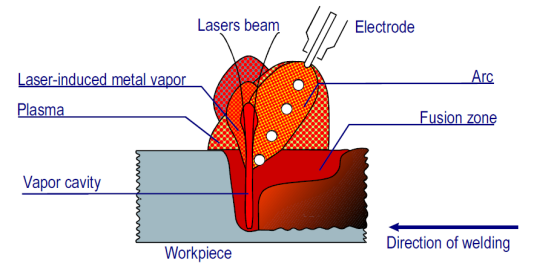
Fig. 1: Schematic representation: LaserHybrid welding
Absorption of the laser radiation is substantially influenced by the temperature of the workpiece surface. Before the laser welding process can get underway, the initial reflectance must first be overcome, especially on aluminium surfaces. This can be achieved by starting welding with a special start program. After the vaporisation temperature has been reached, the vapor cavity is formed, with the result that nearly all the radiation energy can be inputinto the workpiece. The energy required for this is thus determined by the temperature-dependent absorption and by the amount of energy lost
by conduction into the rest of the workpiece. In LaserHybrid welding, vaporisation takes place not only from the surface of the workpiece but also from the filler wire, meaning that there is more metal vapor available, which in turn facilitates the input of the laser radiation. This also prevents process dropout [5, 6, 7, 8, 9].
4. Automotive application:
By using space frame technology, a weight reduction of 43 % is possible in comparison to a steel car body.
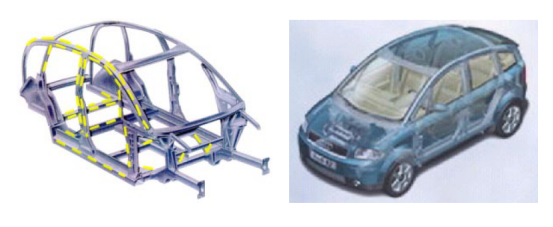
Fig. 2: Audi Space frame A2 concept
The Audi A2 Space frame consists of 30 m Laser (yellow strips in the figure 2) and 20m MIG weld length. Additionally, 1700 rivets are also used.

Fig. 3: Comparison of profiles and joining techniques on the Audi-A2
Figure 4 shows a LaserHybrid welded joint of a ALMg3 cast material with a AlMgSi sheet material. The filler wire is AlSi5 and the shielding gas used is Argon. With increasing laser power, deeper penetration is possible. Combining the laser beam with the arc in this way achieves a larger weld pool than with the laser beam weld process on its own. This makes it possible to weld components with wider gaps.
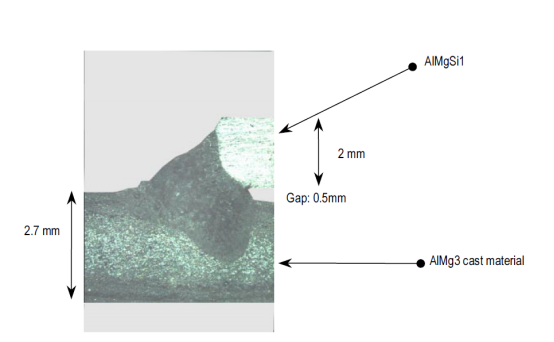
Fig 4: Overlap joint with a gap of 0.5 mm
In the automotive industry there are many applications of overlap welding without joint preparation. At the moment, the state of the art process for this welding job is the laser welding process with a cold filler wire, due to hot cracking of the AA 6xxx alloy. When the joint is welded with a filler wire, a lot of the laser energy will be lost in order to melt that filler wire.
The next figure represents the differences between LaserHybrid and Laser welding on an overlap joint with a welding speed of 2.4m/min. In the case of laser welding, there is no possibility to fill up the weld bead, and undercut is produced. Also, there is only a very small penetration into the base material. The weld bead width is very small, and therefore a low tensile strength will be expected. In the case of LaserHybrid welding,
additional material is transported into the weld pool. The undercut is filled with the wire from the MIG process, and a portion of laser energy is now saved. This saved laser energy can used to increase the penetration into the base material and the weld bead width is bigger than the material thickness, which is required from the numerical simulation.
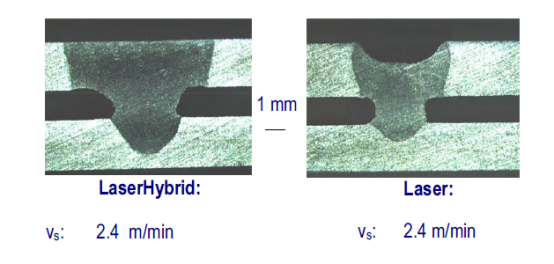
Fig. 5 Comparison between LaserHybrid and Laser welding without filler wire
With the LaserHybrid welding procedure it is possible to weld materials of Aluminium, steels and stainless steels from up to 4 mm material thickness. If the thickness is too high, full penetration is not possible. For joining Zinc coated materials, it is also preferable to use the laser brazing process.
Further applications in the automotive are power trains, axles and car bodies, where the laser hybrid welding process can be suitable.
Welding head:
The welding head should have small geometrical dimensions, so as to ensure good accessibility to the components to be welded, especially in the auto-body field. Moreover, it should be designed to permit both a suitable detachable connection to the robot head and adjustability of such process variables as focal distance, and torch stand-off distances in all Cartesian co-ordinates. Figure 5 shows the welding head, while the process is in action. The spattering that occurs during the welding process leads to increasing soiling of the protective glass. The quartz glass is coated on both sides with an antireflective material and is intended to protect the laser optical system from damage.
Depending on the degree of soiling, the spatter accumulating on the glass can cause the laser power actually impacting upon the workpiece to decrease by as much as 90 %. Heavier soiling generally leads to the destruction of the protective glass, as such a large proportion of the radiant energy is then absorbed by the glass itself, causing thermal stresses in the glass. With that welding head and welding equipment, it is possible to use it for LaserHybrid welding, laser welding, MSG welding and Laser Hot wire brazing.
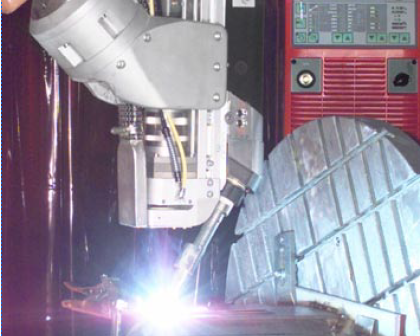
Fig. 6: Welding head and process
5. Advantages of Laser Hybrid welding:
The following advantages result from the merging of arc and laser beam: Advantages of LaserHybrid welding over laser welding:
• higher process stability
• higher bridgeability
• deeper penetration
• lower capital investment costs
• greater ductility
Advantages of LaserHybrid welding over MIG welding:
• higher welding speeds
• deeper penetration at higher welding speeds
• lower thermal input
• higher tensile strength
• narrower weld-seams
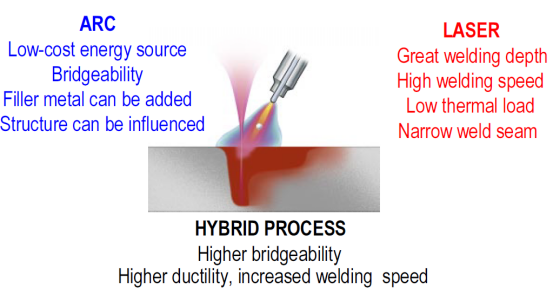
Fig. 7: Advantages of combining the two processes
The arc welding process is characterized by a low-cost energy source, good bridge ability and by the facility for influencing the structure by adding filler metals. The distinguishing features of the laser beam process, on the other hand, are the great welding depth, high welding speed, low thermal load and narrow weld-seams that it achieves. Above a certain beam density, the laser beam produces a “deep-weld effect” in metallic materials which enables components with greater wall thicknesses to be welded – provided that the laser power is sufficiently high. Laser Hybrid welding thus makes for higher welding speeds, process stabilisation due to the interaction between the arc and the laser beam, increased thermal efficiency and greater work piece tolerances. Because the weld pool is smaller than in the MIG process, there is less thermal input and thus a smaller heat-affected zone. This means less weldment
distortion, which reduces the amount of subsequent post-weld straightening work that needs to be done.
Where there are two separate weld pools, the subsequent thermal input from the arc means that the laser beam – welded area – especially in the case of steel – is given a post-weld tempering treatment, spreading the hardness values more evenly across the seam. Figure 6 sums up the advantages of the combined (i.e. hybrid) process.
Turning now to the economic advantages of hybrid welding over laser welding, the following statements can be made: The weld seam consists partly of a laser weld and partly of a MIG weld. The hybrid process makes it possible to reduce the power of the laser beam, meaning that the energy consumption of the laser source can be greatly decreased, as the laser beam apparatus has an efficiency of only 3%. In other words: A reduction of 1 kW in the laser beam power impacting upon the workpiece leads to a reduction of approx. 35 kVA in the power consumed from the electricity mains.
A laser beam apparatus costs around EUR 0.1 m for each 1 kW of laser beam power. To take just one example, in a case where the utilisation of the hybrid process makes it possible to use a 2 kW laser beam apparatus instead of one with 4 kW of beam power, this results in savings of EUR 0.2 m in investment outlays. However, it must be remembered here that for the hybrid process, a MIG machine costing around EUR 20,000 will be needed.
Thanks to the higher welding speed, both the fabrication times and the welding costs can be reduced.
6. LaserHotwire brazing:
Another possibility for combining the laser beam with a filler wire is the LaserHotwire process [10]. In this procedure the filler wire is preheated with the same power source, which can be used for the Laser Hybrid welding process. The filler wire has a current load from 100 A up to 220 A. The wire feed speed depends on the cross section of the brazing bead and of the brazing speed. Brazing offers, through the filler metal amount, a moulding material which can be finished more easily than comparable weld seams. Through the brazing of sheet parts, repair work can be carried out in an easier way than it would be the case with welded joints. One advantage of LaserHotwire brazing is the good corrosion resistance of the brazed zone.
As filler metals, cheap copper based alloys such as SG-CuSi3 are used and Argon serves as a shielding gas.
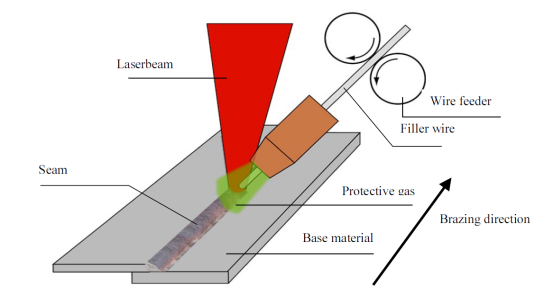
Fig. 8: Schematic representation Laser Hot wire brazing:
The next figure shows the cross section of a Laser Hot wire brazed material. The zinc coated material is brazed with a speed of 3 m/min and the filler wire has a current load of 205 A . The heat input is very low, therefore a low distortion is the result of the brazing process.
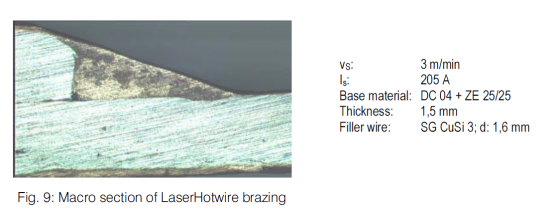
7. Summary:
Laser Hybrid welding is a wholly new technology that offers synergies for wide fields of application in metalworking industries, especially where it is not possible or financially viable to achieve the component tolerances that are required for laser beam welding. The much wider range of application and the high capability of the combined process lead to enhanced competitiveness in terms of reduced investment outlays, shorter fabrication times, lower manufacturing costs and higher productivity.
The LaserHybrid process also offers a new approach to the welding of aluminium. However, a stable process that can be used in practice has only become possible relatively recently, thanks to the higher available output powers of solid-state lasers. Numerous studies have examined the fundamentals of laser-arc-hybrid welding processes. By “hybrid welding process”, we mean the combination of laserbeam welding and the arc welding process, with only one single process zone (plasma and melt). Basic research studies have shown that a process is possible in which – by combining the two processes – synergies can be achieved and the drawbacks of each separate process can be compensated for, resulting in enhanced welding possibilities, weldability and welding reliability for many different materials and constructions. In particular, this has been demonstrated for aluminium alloys. By choosing favorable process parameters, it is possible to selectively influence weld properties such as geometry and structural constitution. The arc welding process increases the bridgeability by adding filler metal; it also determines the weld-seam width and thus reduces the amount of workpiece preparation that is needed. Moreover, the interactions taking place between the processes lead to a substantial increase in the efficiency of the process. This combination process also requires considerably smaller investment costs than does the laser welding process.
The Laser Hot wire brazing process can be used especially for zinc coated material to get a good corrosion resistance.
Post time: Apr-18-2025
















